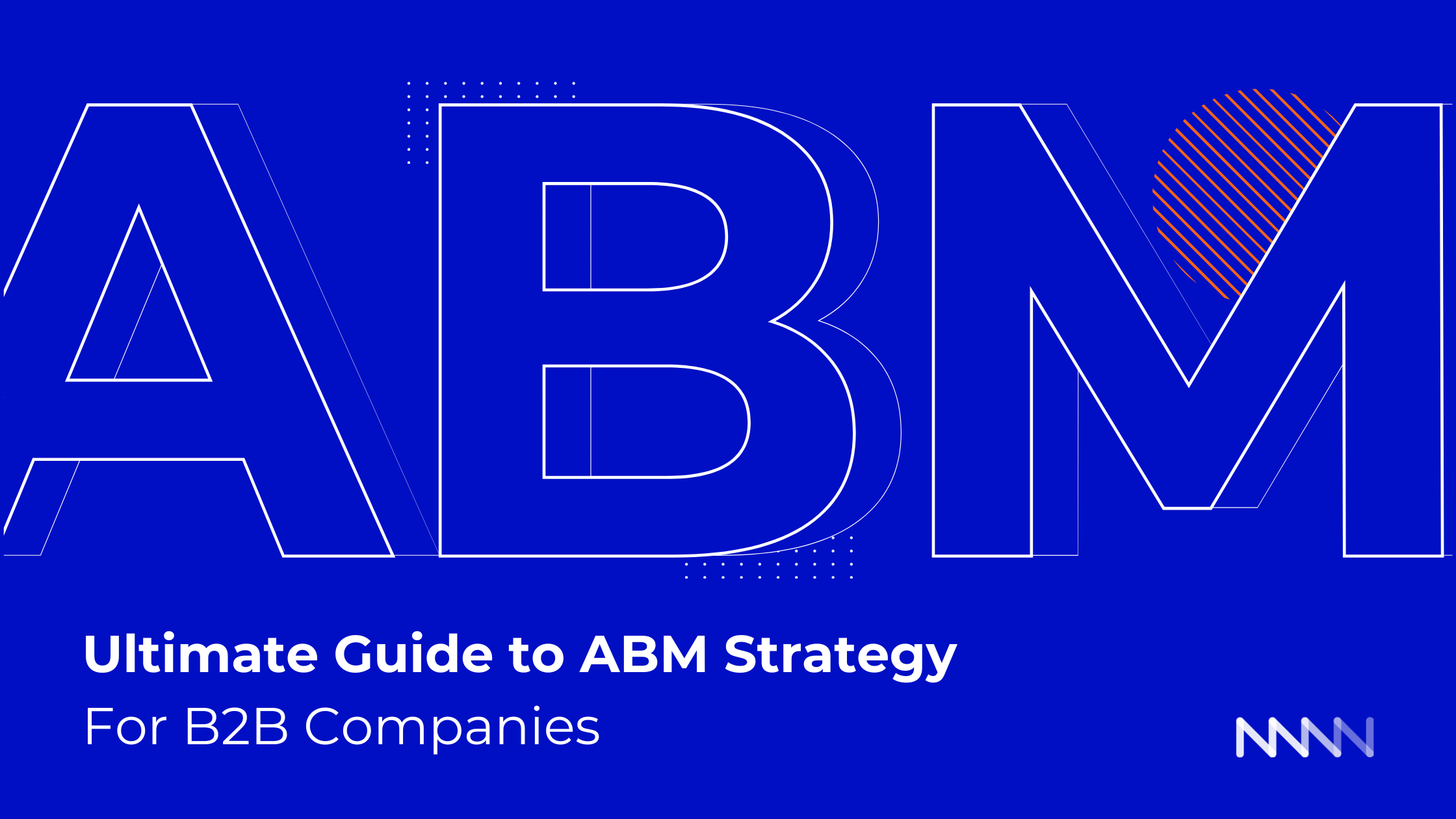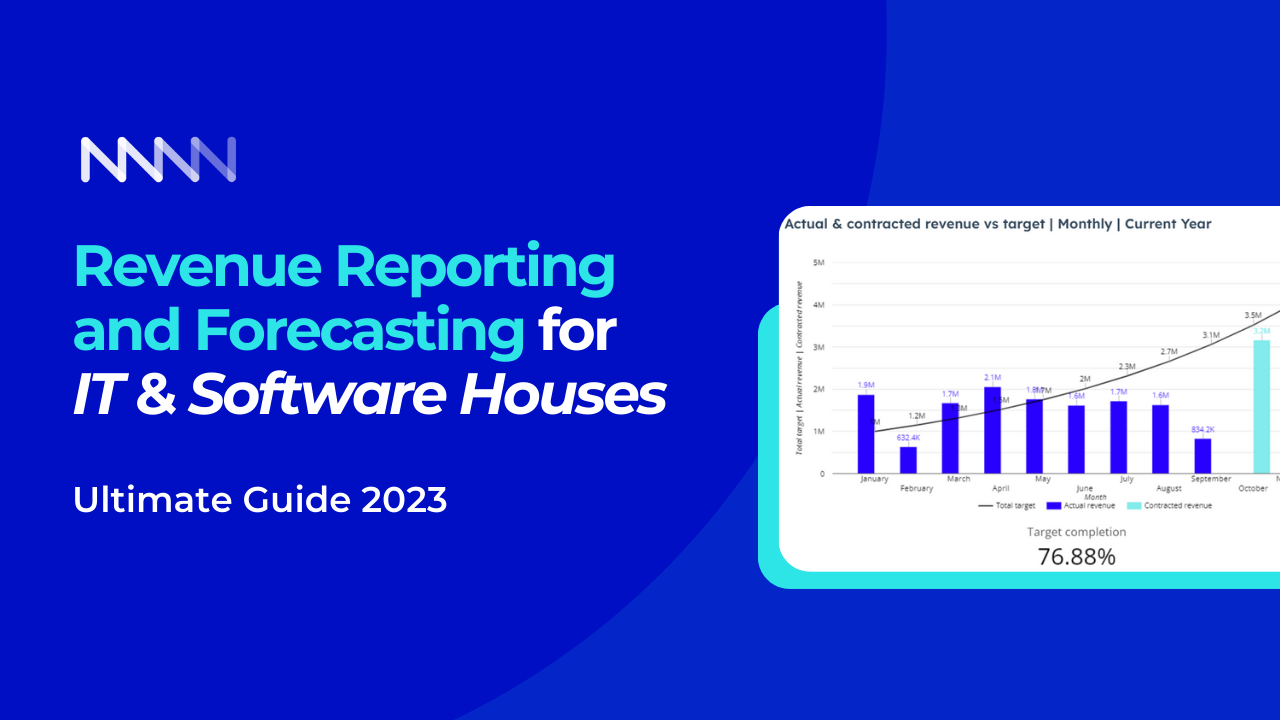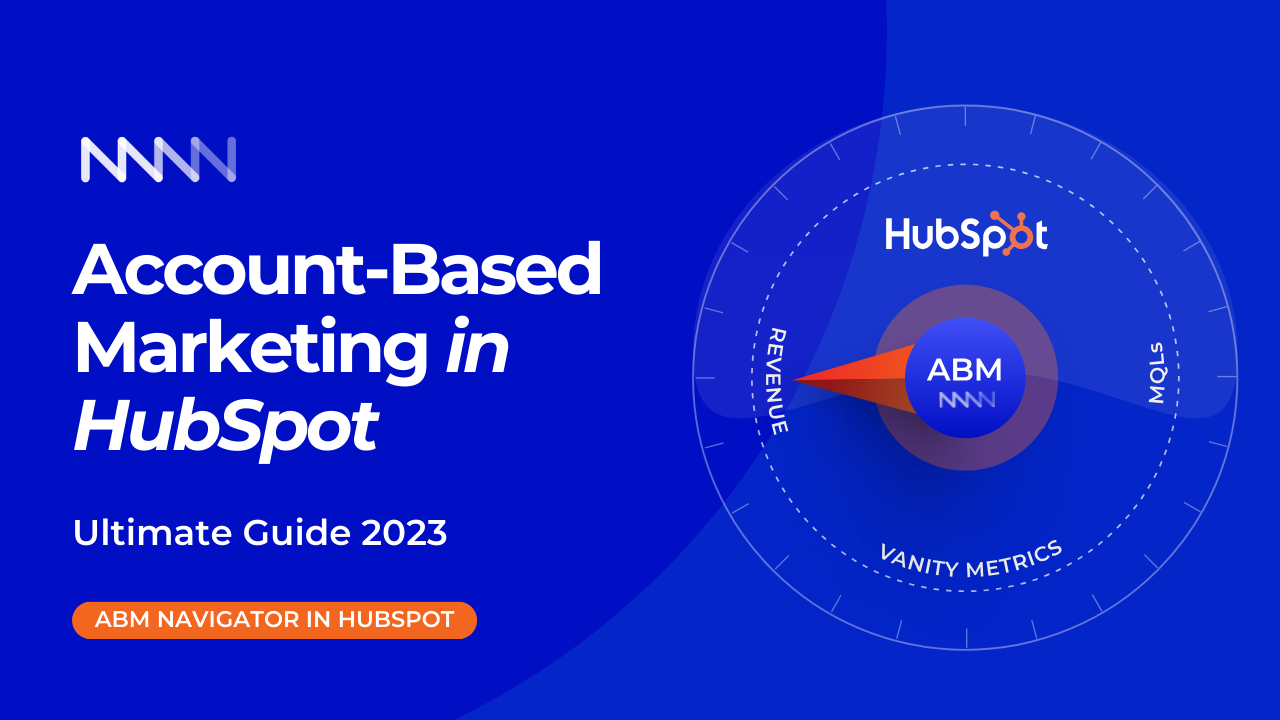Sales Planning & Forecasting w/ HubSpot
From this article, you'll learn how to choose the right forecasting strategy for your company and how to set it up in HubSpot.
Table of Contents
Forecasting means creating a model that accurately predicts the revenue.
You see, most companies make a fundamental mistake when it comes to forecasting. They treat it like a mathematical exercise.
Whilst, real forecasting means creating a model that accurately predicts your revenue, so the entire company has clear goals and plans. It allows you to properly align the budget with an operating plan so you can invest and grow with confidence.
As a result, you can challenge all revenue team members with real targets, not fantasized ones. Too many sales reps already miss their quota not because they are bad at selling, but because financial goals are not rooted in reality.
And this is only one side of the coin.
There are human beings behind every business, not only excel sheets and data in CRM. Forecasting should be started from a bigger context (vision, values, strategy) you should explain to your teams.
-png.png)
Thanks to that every team member knows exactly what is his part in the bigger picture. It gives him a sense of PURPOSE that drives efficiency and satisfaction from daily tasks.
I know, sounds a bit lofty, but this is how sapiens' brain works.
See? There is much more behind forecasting than just a few mathematical formulas. And as overwhelming as it might look, sales forecasts and planning don’t have to be difficult. To be honest, most companies overcomplicate things.
As a result, they can’t do forecasts on time. And suddenly, when the new year or quarter is beginning they don’t have a clear plan in place.
Results? GTM teams are running around with no specific goals, KPIs, or incentives. The management keeps their teams busy pretending to know what they're doing, while the company is heading toward an iceberg.
But, it doesn’t have to be that way.
So, how to do sales forecasting and planning easily and effectively?
Forecasting approaches: top-down and bottom-up
There are two fundamental approaches to start with: top-down and bottom-up.

Bottom-up.
You start with the resources you have. Here, you are trying to understand if you have the rights skills, and people in place. This is where you ask questions like:
- How many MQLs are being generated by my marketing team?
- How many SQLs can sales reps handle per week, month, or quarter?
- Do I have the right skills in place or do I need to do more/better coaching?
- Is the onboarding process effective and does it shorter ramp-up time?
You look at what you achieved with your resources in the past. From this point, you can start figuring out how to change or adjust your strategy to increase targets. By calculating new targets you can predict potential revenue as a final result.
Top-down.
You start from the top, looking at the revenue you generated last year. Then, if you have the right data, you can plan to increase it by, let's say 15% this year. Now you communicate the targets (with a bigger context) that the company needs to achieve to make it happen. Regarding that, you plan or adjust your strategy and check if you have the right resources in place to set the whole revenue generation engine in motion.
And now, read even more carefully.
You don’t have to choose between these two approaches. Quite the contrary, we encourage you to do both at the same time. This is how we are using top-down and bottom-up approaches in MAN Digital.
- We start with the top-down method and set goals pointing out where we want to be with net new revenue in a given year.
- We set up new REAL targets we need to hit to achieve that goal
- We validate our resources from the bottom-up approach.
- We build up our strategies and resources towards these targets.
Siloed infrastructure holds your business back. You need a Single Source of Truth
Ok, you know fundamental approaches. So far, nothing complicated. So, why the heck do so many companies have a problem with accurate sales forecasting?
The answer lies in DATA.
Here is the rub!
To put any forecasting approach in use and start sales planning, you need the right historical data. Seems obvious. Not a big deal… until you open your CRM.
You see, in most companies, the right data are like Yeti,… everyone heard about them, but never saw them. And your forecasting is only as good as the data you put in it. Plus you have to know exactly what kind of data to collect and measure.
And that’s a hassle in companies that still operate in siloed infrastructure.
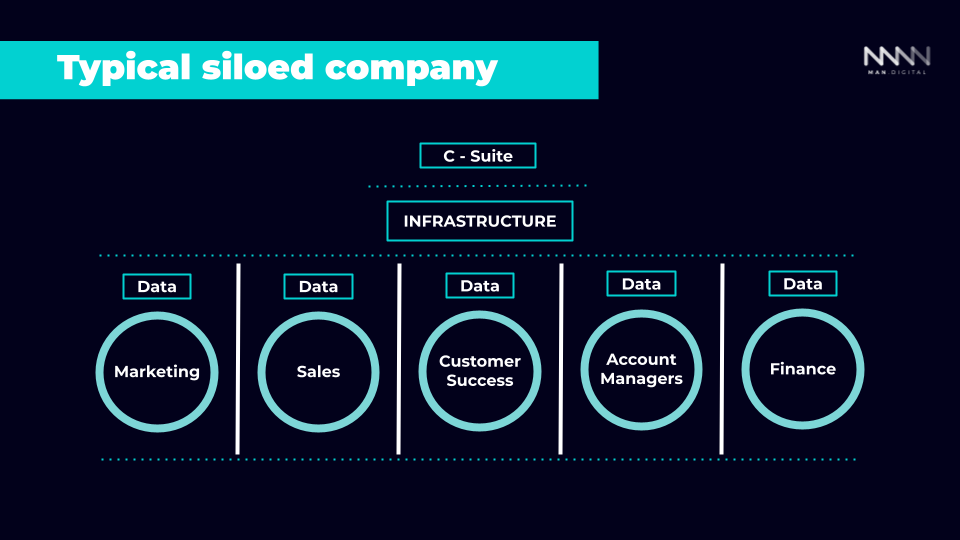
The reality goes like this. Teams work in silos with no access to shareable data across the funnel. Every department work with a different set of KPIs without an understanding of how other teams are contributing to revenue. In such an ecosystem, forecasting is like trying to put up a wall, while builders use cubits, meters, and feet instead of unified metrics. Good luck!
To resolve historical data issues, you need a framework for standardized data across all departments. So everyone speaks the same language when it comes to data definition.
It's called a Single Source of Truth.

What does it give you? Based on HubSpot:
1️. Complete business overview - you can now predict future growth and trends by tracking progress toward goals and analyzing historical data.
2️. Break down data silos - your company can be sure that they didn't overlook any relevant data when making changes in strategies.
3️. Eliminate duplicate data - having one source of truth helps you to make sure that there is no duplicate data and that storage resources are used more efficiently.
4️. Increased productivity - teams can create forecasts faster without having to pull data from multiple sources.
5️. Support new strategies with data - with all sharable data in one place, the entire company can make forecasting with greater confidence.
Use Funnel Metrics Model to track the right activities and align your GTM teams
“What gets measured gets done. But unless everything you’re measuring is aligned, you may be measuring and doing the wrong things” - Mike Geller
This is why your business needs the right data model. It fuels your Single Source of Truth, aligning teams around common KPIs and business goals with visibility into the full customer journey.
.png?width=960&height=540&name=Webinar%20-%20Sales%20Forecasting%20%26%20Planning%20with%20HubSpot%20(1).png)
Here it is, Funnel Metrics Model from Winning by Design. Simple, elegant, and effective. Why?
It forces your organization to have the same definitions of:
- Lead,
- MQL,
- SQL,
- Opportunities,
- Successful Customer
And when the right metrics are tracked from the left side to the right side, all functions and departments ultimately understand activities that contribute to driving revenue.
It gives you also visibility into crucial metrics such as:
- Conversion metrics (CR) between each lifecycle (e.g what is the % of MQLs converting to SQLs )
- Time metrics (AT1, AT2, etc) (eg. how many weeks does it take for MQL to become an SQL)
So far, so good.
To wrap it up, MVP data you need for accurate Sales Forecasting:
- Average Contract Value
- Number of Won Deals
- Deal Sources
- Funnel Conversion Rates
Ok, you’ve got forecasting approaches, a Single Source of Truth framework, and a Data Model. Now, it’s time to drive them all home.
To set everything up, you need proper Infrastructure.
Forecasting needs proper infrastructure. Check why we use HubSpot
Even Stevie Wonder would have seen, that in MAN Digital HubSpot is CRM of the first choice. Why? There are a lot of reasons.
But for forecasting purposes, it allows you to track historical data across time.

In addition, you can follow funnel metrics like volumes and conversion rates between different lifecycle stages.
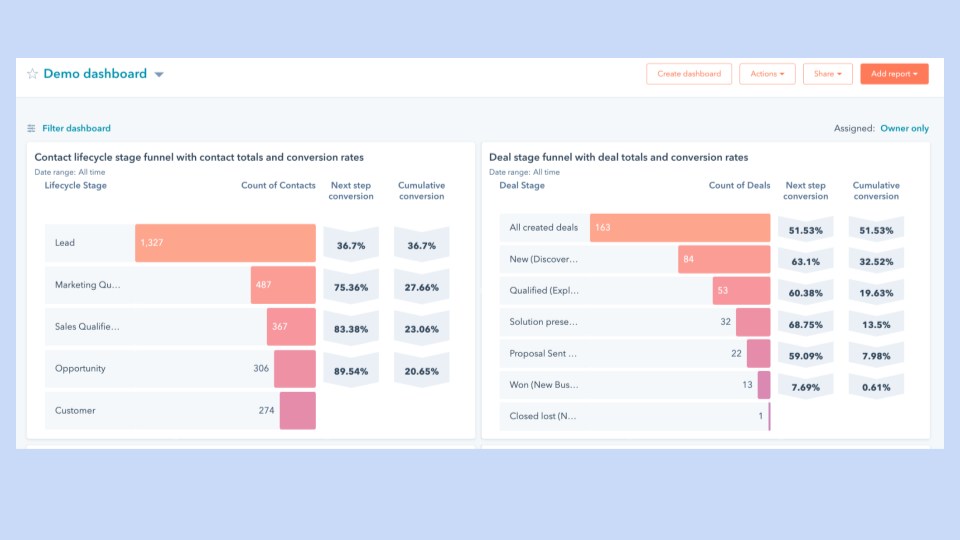
HubSpot gives you also insights into granular data from the past. Let's say, you have a certain revenue goal and you want to build it based on a specific GTM motion. To do that, you need to break the pipeline down by each source, e.g Outbound.

Taking Outbound as an example, you need to understand how it performed in the past and see if putting a financial goal in this specific GTM is justified. So here, you can find answers to the questions like:
- How many deal values have we created via this channel?
- How many deals have we closed?
- What was the total revenue generated in a specific period via this channel?
Digging deeper, you can also understand the metrics that influenced these results and KPIs. E.g. in the case of our Outbound, one of the KPIs was the number of enrolled companies during a week and month.

And that brings us inevitably to the next point.
Sales Forecasting based on pipeline sources gives you the best insights into future growth
In MAN Digital, we plan our revenue goal based on pipeline sources. This way of forecasting gives us visibility into which GTM motion generates certain revenue.
I encourage you to steal that one.
It helps you to understand:
- The resources you have.
- Marketing spends for each GTM motion.
- A general investment you have for each GTM motion.
- Results every GTM motion brings (ROI)
Looking at this beautifully simple sheet you immediately see what's the contribution of each GTM motion toward your revenue. In our case the biggest contribution is Demand Gen, then it's ABM and Outbound, and the least is events,
Thanks to that, you know exactly where you can invest more or which GTM motion the experimentation stage (not repeatable results yet). And much more.
For E.G. the baseline rate allows you to validate if increasing specific GTM motions is justified, or not. You probably should check the quarters and the seasonality too, as they affect your pipeline. In our example, we have 25% for each quarter. But generally, what you can see is that in Q3 revenue generation was less because of the summer (which is normal in this period of the year).
I told you. Simple, elegant, and effective.
In the next stage, we take a top-down perspective and estimate how many deals we need from each GTM motion in a certain quarter. You can do it by understanding certain assumptions right from the final metrics.
In our example, ACV is 75k euros, so to achieve 750k euros we need at least 10 deals. Then we spread it across GTM motions.
See the pattern? Even from the planning and forecasting perspective, we force teams’ alignment. They have common and very clear goals set up in specific periods.
Now again, how can HubSpot help you with sales planning?
Let’s say that you look at your conversion metrics and think “ok, I need to increase the number of SQLs by 20% a month, to increase x number of closed won deals.
Piece of cake.
You can plan (in the HS Enterprise version) any kind of goal that is connected with an object in your infrastructure and track it. And you can do it for pipeline value and any other metrics or dataset that is available in the infrastructure.
To make the long story short, whatever goals you have you can set them up and track them in HubSpot.
Pretty cool, huh?
Use HubSpot to gain forecasting visibility over time
Ok, you have your plan set and the whole revenue engine is starting work. It’s time to check if you are on track, and what you can expect from the future. Here, you’ve got two ways.
- You can flip the coin. According to Bridge Group, the forecast accuracy across all of the companies they had surveyed was 46%. You would still do better.
- You can stop trusting luck and create a forecasting dashboard in HubSpot. As a bonus, you will avoid the tax on gambling
Number 2? Good, let's see what we’ve got here.
We split our forecasting dashboard into three, easy to measure categories, which gives us forecasting visibility over time:
Goals -> baseline you set up for your team. It shows you what is the minimum revenue your teams have to generate every month to achieve your financial goal (at the end of the year). In this example, you see that you have to achieve at least 20k euros every month (if the final financial goal is 240k euros)
Results -> certain revenue generated in a given period (a month in this case) by the whole company. You can also set it up for a specific team or a certain sales rep.
Forecast -> predictions based on pipeline value and deal stages probability. Take a look at December. You see that the forecasted revenue is far below your baseline goal (20k euros). It warns you that you should increase pipeline value or your goal might not be achieved this month. As a result, you can take action in advance.
Use deal stage or manual forecast in HubSpot depending on the situation
1. Forecasting based on the deal stage (automated)
You assign a deal stage with a given probability (you can adjust it whenever you want in a deal setting) to a certain buyer in the pipeline. Probability is updated automatically whenever a deal stage is changed.
As in this example, you can say that if the deal stage is “appointment scheduled” and “qualified to buy”, there is a 40% chance of potential revenue.
If the probability is 40%, it means that out of 50k euros you have in the pipeline you will probably close 20k.
Pretty useful, but sometimes it can be misleading. This is where an option of manual forecast comes with help.
2. Manual forecasting based on reb submission.
Maybe a little bit old-fashioned, but still very effective.
In this case, the sales rep, based on insights and data he has, can say: “Actually, this deal is not gonna be closed in this month (or quarter, or even year). Then, he can go directly to the deal settings and set the forecast manually.
-png-1.png)
But, there is more!
The sales rep can submit a forecast as an estimation of how much revenue he thinks is possible to close in a given period.
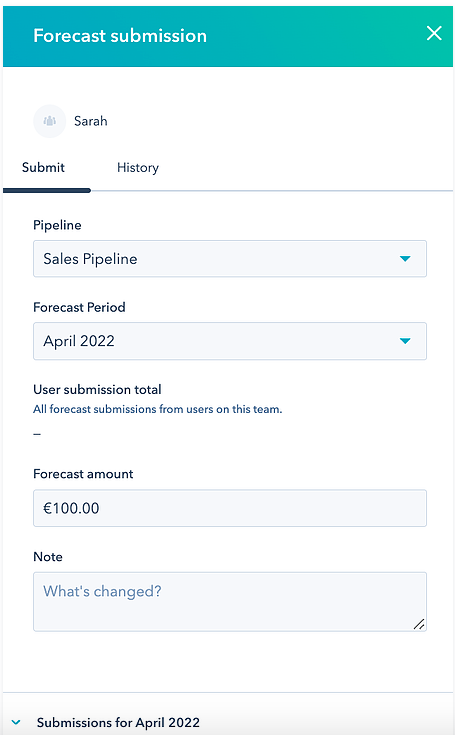
In addition, you can review deals assigned to every sales rep whenever you need to. 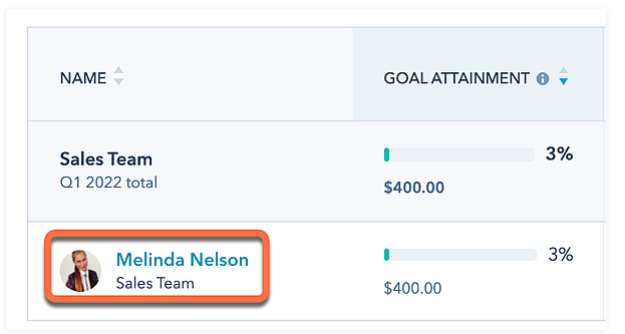
It shows you where each deal is in the pipeline and which ones need more attention from your sales rep to close them.

Remember, it's not about micro-management. It's about identifying bottlenecks in the pipeline, sales coaching, and boosting reps' efficiency to help them achieve their goals.
Revenue generation is a team sport.
Six main takeaways you should drive home
What a wild ride, huh? But, you know the saying, all good things must come to an end. Our little adventure with sales planning and forecasting is not an exception. So, to recap what you (hopefully) learned today:
-
Accurate forecasting gives your company a clear strategy and realistic financial goals. As a result, you can properly align the operating budget with the operating plan so you can invest and grow with confidence. There is also a human context behind the forecasting you cannot forget about.
-
There are two basic forecasting approaches, bottom-up and top-down. Bottom-up starts from resources you have and goes up through strategy, targets, and potential revenue. Top-down starts from the revenue you generated last year and goes through targets, strategies, and resources to predict net new revenue for a new year. You can combine both approaches in your forecasting for maximum accuracy.
-
Siloed infrastructure holds your business back. In such an ecosystem departments don’t have sharable data and standardized definitions of key metrics. Making a forecast is a hassle. To resolve that issue, you need to create a data-driven culture with infrastructure working as a Single Source of Truth where data, KPIs, and lead definitions are standardized for every team.
-
Put Funnel Metrics Model into your Single Source of Truth. It forces your organization to have the same data definitions and makes sure that your teams track the right activities contributing to revenue.
-
Sales forecasting based on GTM motion is one of the most effective ones. It gives you an insight what's the contribution of each GTM motion toward your revenue. Based on that, you can plan your financial goals more accurately.
-
HubSpot gives you full visibility into historical data and funnels metrics, as well as arms your teams with automated and manual forecasting. All that boost your forecasting accuracy with actionable and easy-to-use data.

